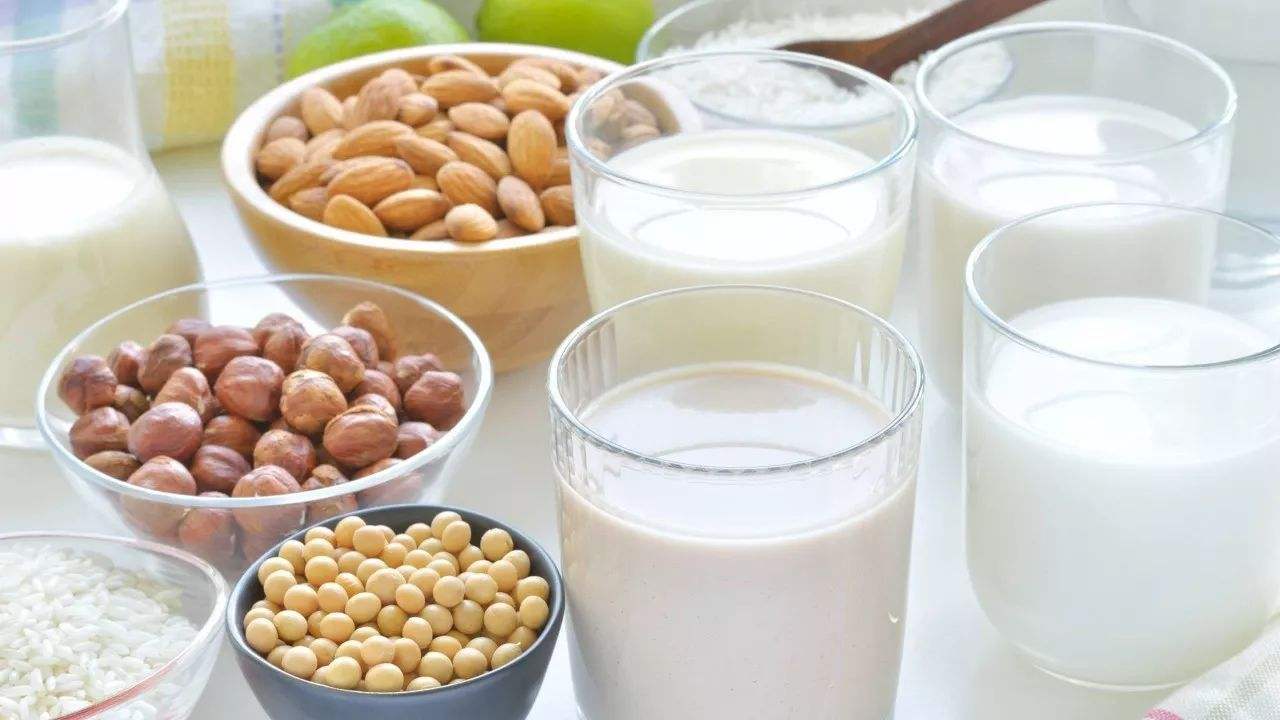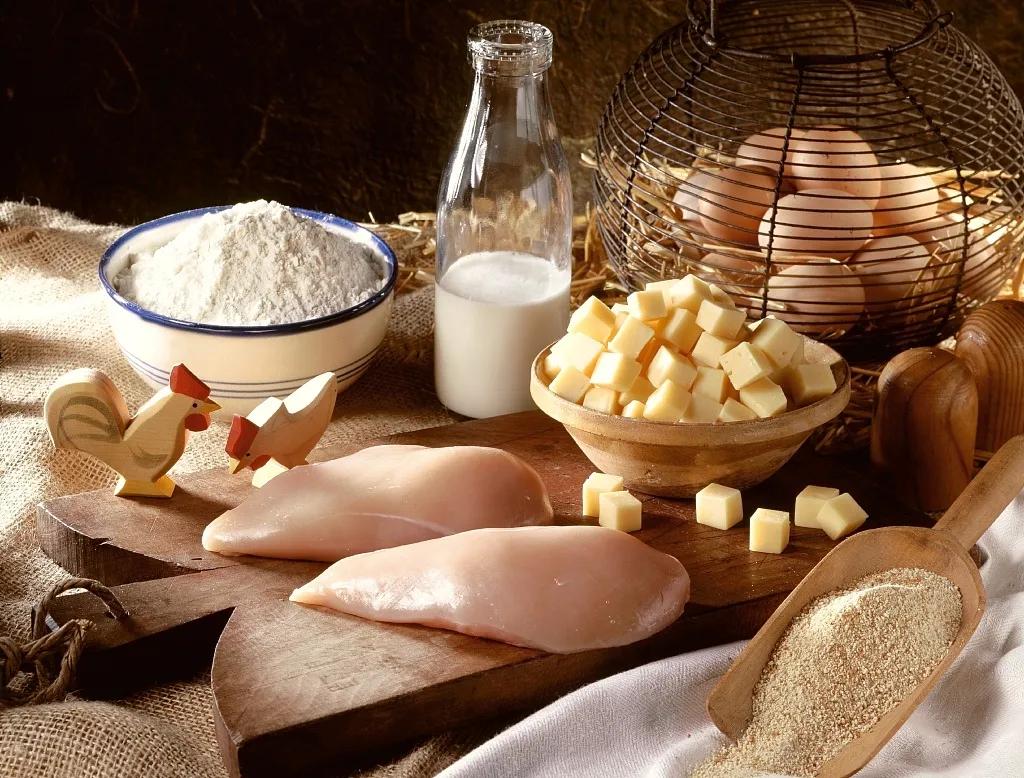Biology tells us that protein is the material basis of all life, protein is an important component of all human cells and tissues, and amino acid is the basic constituent unit of protein. Proteins are absorbed by the body and converted into amino acids, which are used to make proteins for the body’s cells and improve metabolism. Protein can be divided into plant protein and animal protein from the source, which is also the main source of human protein, so what is the difference between plant protein and animal protein?
What is plant protein?
As its name says, plant protein is protein from protein-rich plant foods such as grains, lentils, nuts, beans, and certain fruits such as avocados.
What is animal protein?
Proteins from animals such as meat (beef, lamb, pork, chicken), fish, eggs and dairy products. Animal proteins are more similar in structure and quantity to human proteins because of the automatic object itself.
Plant proteins VS Animal protein
Different structures and storage modes
From the perspective of protein molecules, protein is a peptide chain composed of amino acids (primary structure), the peptide chain forms a helix or fold (secondary structure), further wound to form groups (tertiary structure), various groups are combined together in a certain mode (quaternary structure). The secondary structure of plant protein is dominated by β -fold, while that of animal protein is dominated by α -helix. From the state of protein in food, plant protein is often combined with carbohydrates (non-starch polysaccharides and dietary fiber), while animal protein mainly coexists with fat.
All these factors will bring about the difference in nutritional value between plant protein and animal protein. For example, animal protein intake is often accompanied by a high intake of saturated fats; Edible soybean includes both soybean protein and functional components such as dietary fiber, isoflavone and soybean phospholipid.
We need dietary protein to provide 20 amino acids; If these amino acids are insufficient, some can be “borrowed” (the body synthesizes non-essential amino acids directly or indirectly from other nutrients), and some must be obtained from food.
Different digestibility
Digestibility refers to the degree of decomposition of protein by digestive enzymes and the degree of absorption of amino acids and peptides after digestion. The more food is absorbed by the body, the higher its nutritional value. Plant proteins often coexist with phytic acid, protease inhibitors, phytohemagglutinin, tannic acid and other anti-nutritional factors that affect protein digestion. Due to structural differences, plant proteins tend to have a lower digestibility than animal proteins.
Egg protein is often used as a reference, and its digestibility is 100%. The accepted measure of protein quality is the “Protein Digestibility Corrected Amino Acid Score” (PDCAAS), with a score of 1 meaning that the protein contains all nine essential amino acids that the body needs, and each in the required amount. Currently tied for first place are whey protein, casein, egg protein, and soy protein isolate. Therefore, food processing is particularly important for improving the digestibility of plant protein. Just by cooking food, you can increase protein digestibility by 18%. Soybean meal has a protein digestibility of only 80%, while soy protein isolate can reach 98%.
Different health effects
Compared with animal proteins, plant proteins have many health benefits, including a reduced risk of cardiovascular disease, type 2 diabetes and some cancers. For example, milk protein has the function of controlling body weight and lowering triglycerides, while soy protein isolate has a more obvious effect on lowering blood lipids (triglycerides, total cholesterol and Low density lipoprotein cholesterol can all be reduced) than milk protein. Soy protein can also lower blood pressure, improve insulin sensitivity, and reduce the level of inflammation in the body. The U.S. Food and Drug Administration has certified that eating 25 grams of soy protein a day can reduce the risk of heart disease.
Different environmental impacts
Compared with animal protein, plant protein is more environmentally friendly and sustainable. For example, producing 1 kg of soy protein isolate releases 2.4 kg of carbon dioxide into the environment, while producing the same amount of beef protein is 178 kg! Other animal proteins, such as chicken and pork, also have much higher greenhouse gas emissions than soy. It takes 8 square meters of farmland a year to produce 1 kilogram of soy protein isolate, and 1, 311 square meters of beef protein!
You may be confused about which is better, plant protein or animal protein? That starts with knowing their advantages and disadvantages.
Advantages of animal protein
Animal protein contains more amino acids. Animal protein, which contains all nine essential amino acids, is more complete and better meets nutritional needs. Essential amino acids refer to amino acids that must be taken from food and cannot be synthesized by the body itself or at a speed that meets human needs.
Animal protein amino acids are more easily absorbed by the body. Another important index to measure the value of protein is the digestibility of protein in the human body. Animal protein amino acid composition is closer to the human body, digestion and absorption rate is higher, the better for the human body.
Disadvantages of animal protein
Generally, people consume protein through food. However, most meat foods contain more fat, which leads to excessive intake of extra fat in addition to the required protein, which increases the body fat and plasma cholesterol content and increases the risk of disease.
Advantages of plant proteins
Many plants, such as quinoa, have high or even good protein. Eating plant-based protein can reduce your intake of saturated fatty acids, which can esterify LDL to lower cholesterol levels and boost your intake of fiber and antioxidants.
Plant protein can reduce saturated fat intake and plasma cholesterol levels. Plants do not contain cholesterol or saturated fat, thus reducing saturated fat intake, lowering plasma cholesterol and reducing the risk of cardiovascular disease.
And they also have one thing that meat lacks completely: fiber, or dietary fiber, which takes up more room in the stomach and makes you feel full. At the same time, it will absorb a lot of water, increase the volume of excreta in the intestinal tract, and promote intestinal peristalsis.
Disadvantages of plant protein
Contains low amounts of amino acids. Plant proteins generally lack one or two essential amino acids. And animal protein contains a complete range of essential amino acids, consistent with human needs. If one or more amino acids are missing from protein intake, the process by which food proteins are made into our own proteins is blocked.
Amino acids are not easily absorbed by the body. The high content of protease inhibitors in plants is not conducive to the digestion and absorption of protein. Compared with animal protein, plant protein contains more protease inhibitors, and the hydrolysis of plant protein is less sufficient, so it is more unfavorable for human digestion and absorption. Plant proteins appear to be superior in terms of cardiovascular health and weight loss, while animal proteins have an advantage in terms of getting the right amount of nutrients in small amounts.
Modern diets tend to be heavy on animal-based foods, so plant proteins have long been favored. How much protein should you eat each day? Evidence suggests that adult men need 65 grams of protein a day and adult women 55 grams. But the total daily intake should not be too high or you burden your kidneys. We recommend that you eat more vegetables and fruits with high plant protein, and eat meat and poultry with low-fat content in moderation. The balanced distribution of them will make our bodies healthier.
- Dandelion Extract: What It Is, Benefits, Uses and Side Effect - April 23, 2024
- Is Berberine Extract Help For Weight Loss? - April 11, 2024
- Why Is Pysllium Husk Powder A Popular Meal Replacement Ingredient? - April 3, 2024




